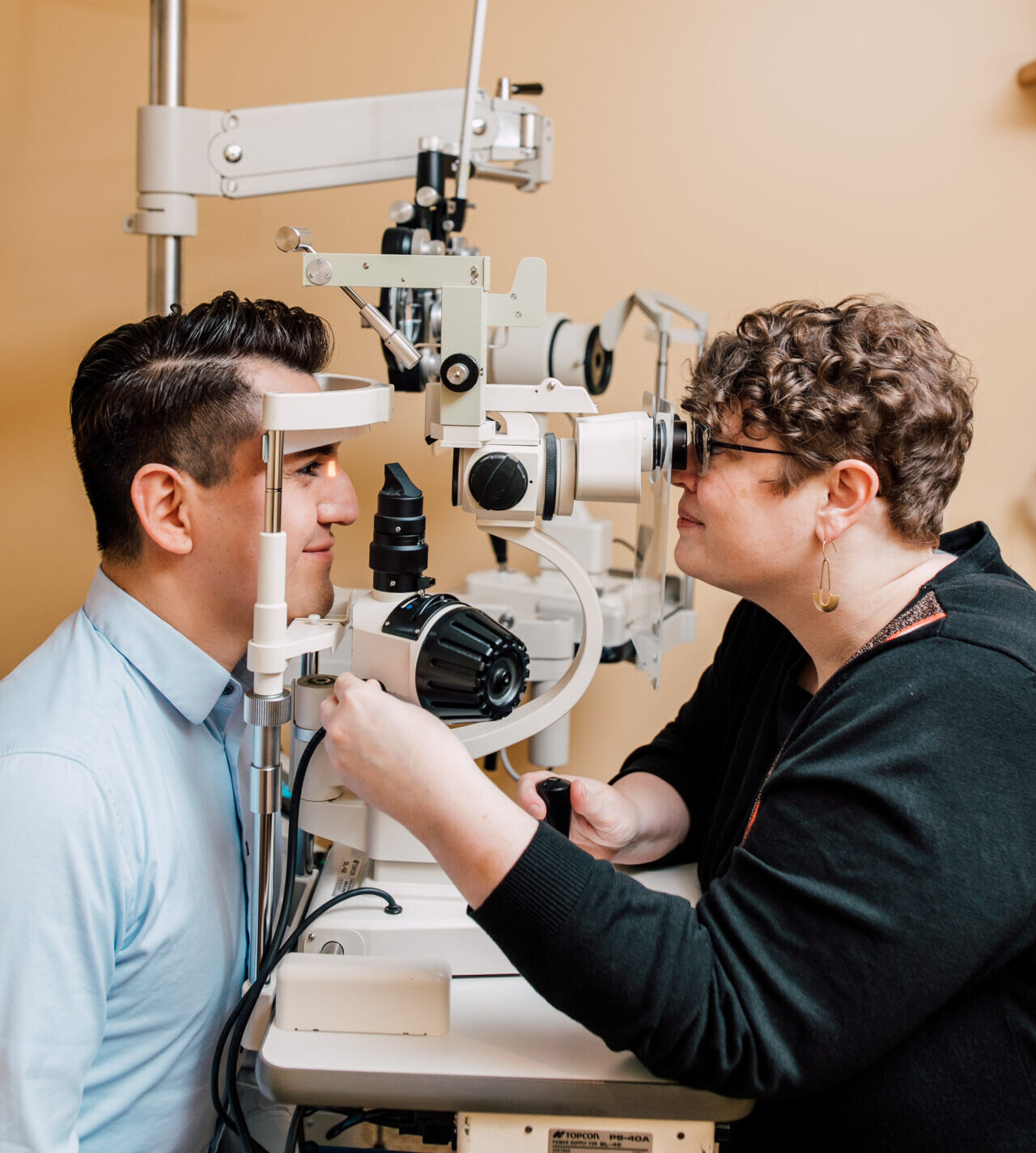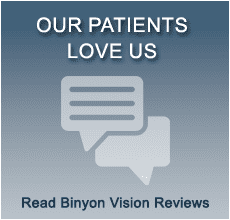What can I expect in a Comprehensive Eye Exam?
 Comprehensive eye exams consist of two parts: refraction (vision testing) and an eye health examination. After a discussion about how you use your eyes during the day, our optometrists will perform a refraction at multiple distances:
Comprehensive eye exams consist of two parts: refraction (vision testing) and an eye health examination. After a discussion about how you use your eyes during the day, our optometrists will perform a refraction at multiple distances:
- distance
- intermediate/computer
- close/reading
Using the phoropter (shown in image) the doctor measures the refractive error in your eyes which translates to a prescription for glasses. More than one glasses prescription may be written to help you see your best for your lifestyle, work, and hobbies. Some of the task specific prescriptions our doctors have written include computer glasses, needlepoint glasses, music glasses, and golf glasses.
In a perfect eye light passes through the cornea, pupil and lens and focuses exactly on the back of the retina, and the brain interprets what it sees. When a refractive error is present, the light does not focus on the back of the retina as described below.
There are four basic types of refractive error:
Myopia (nearsightedness) – as light passes through the eye, it focuses at a point in front of the retina, instead of on the surface. It is possible to see items close up- but the distance is blurry. Signs and symptoms of myopia include squinting, eye strain and headaches.
Hyperopia (farsightedness) – when light rays enter they eye- they focus behind the retina, causing blurry vision up close, but typically clearer vision in the distance. Hyperopes typically experience eye strain and fatigue when reading or working on the computer.
Astigmatism – as light goes through the pupil, it creates multiple focal points- either in front of the retina, behind or both, causing vision to be distorted to some degree at all distances. Uncorrected astigmatism causes squinting, eye strain and headaches especially when reading or driving at night.
Presbyopia – the muscles around the lens in our eyes help us to focus as our vision as we look from the distance to close up. As our eyes age, these muscles lose elasticity and are not able to tighten as much to help us focus up close. Sometime between the ages of 40-50, everyone experiences the need for magnification up close to overcome the blurry vision when reading and performing close tasks.
The important eye health exam includes visual field testing, slit lamp exam, glaucoma test, and dilated exam. The doctor evaluates the health of every part of your eye- lashes, lids, iris, cornea, retina, optic nerve and lens. The doctor looks for any signs of eye disease including glaucoma, cataract, or macular degeneration that could cause vision loss in the future. Our doctors explain each test and the findings with you and make sure any questions are answered to your satisfaction.
Next Page: Contact Lens Exams
” Thank you for the ease of my recent eye exam. Dr. McEathron is informative and thorough, as well as kind and reassuring . He took time to answer questions I had, not only about my eyes, but about the procedures and equipment. I felt valued and respected by him and the other staff who assisted me while I was there.” – Sidney











